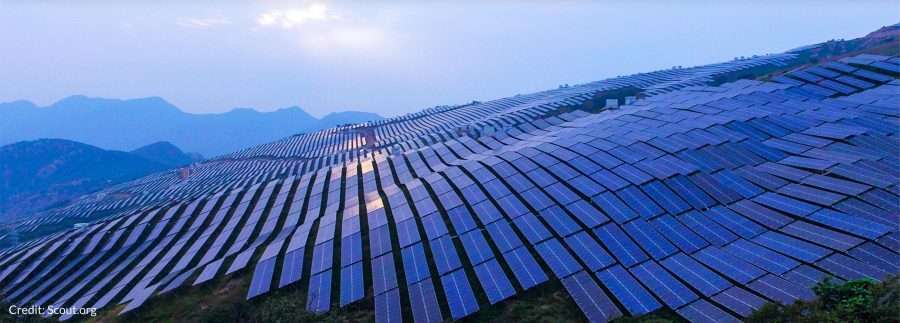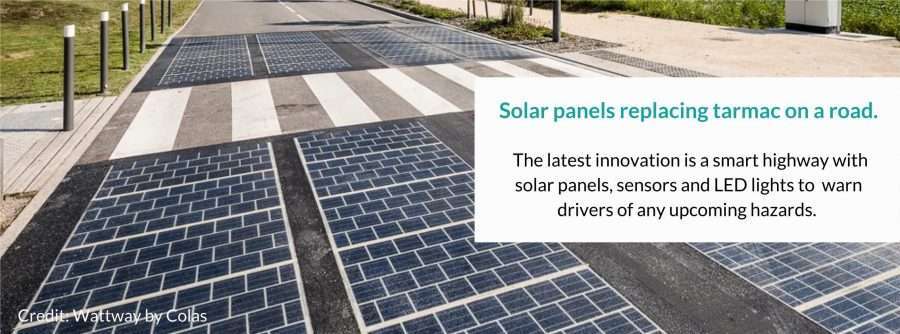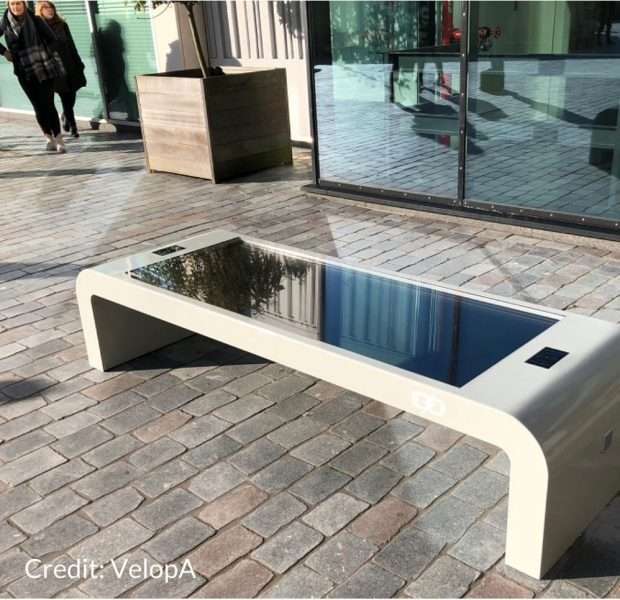Re-Imagining Glass Applications
Constituted as the ideal material for unlocking new advancedcapabilities and potential applications in building and architecture,glass is the perfect fusion of form and function. Researched andanalysed by many, various forms of experiments and discoverieshave surfaced, leading to constant advancements in the glassindustry. One of the many discoveries – making glass and façadeelements more multifunctional.
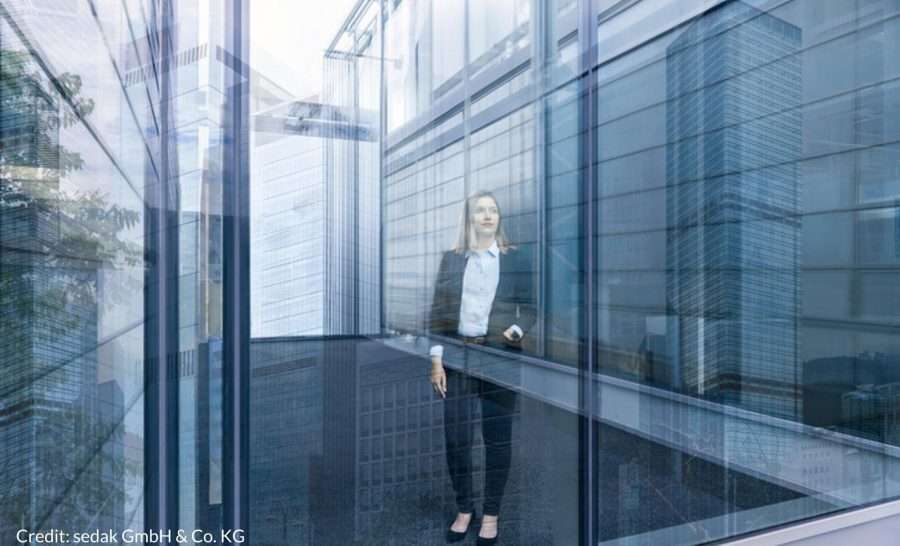
While these elements already comprise of control functions andsun protection, the future will see even more functions in variousaspects being added. With so much untapped potential, it is hardto tell what the next innovation of glass will be! To begin with, let’sfind out about the latest developments in glass applications.
5G Compatible Glass Antennas
Spearheading the digital glass sector, AGC has partnered withDOCOMO to create the first 5G compatible glass antenna thatoffers cellular base station capabilities, which transmits andreceives radio waves to windows.

Designed to establish a communication network in neighbourhoods without affecting the appearance of the exterior side of buildings, AGC optimized glass – a transparent material to avoid compromising both the outside and interior views. Furthermore, it is an ideal solution for historic city centres and densely populated areas, where installing conventional antennas on the walls of houses is deemed inappropriate and could hurt the cultural heritage in certain historic buildings.
Till date, these highly awaited pioneer antennas have only been deployed in Japan, mainly in urban areas. With an expected surge in demand in the future due to the recent architecture “re-boot, re-vamp, re-think” movement brought about by the COVID-19 pandemic, AGC has already started ramping up production at mass-production plants.
WAVEATTOCH™
Designed for seamless direct installation on glazed facades, the WAVEATTOCH antenna enhance coverage quality and the capacity of mobile networks, including 5G, and blends in discretely into urban landscapes. Not only does it remove the highly posed challenge of installing antennas on walls, it significantly reduces time and costs.
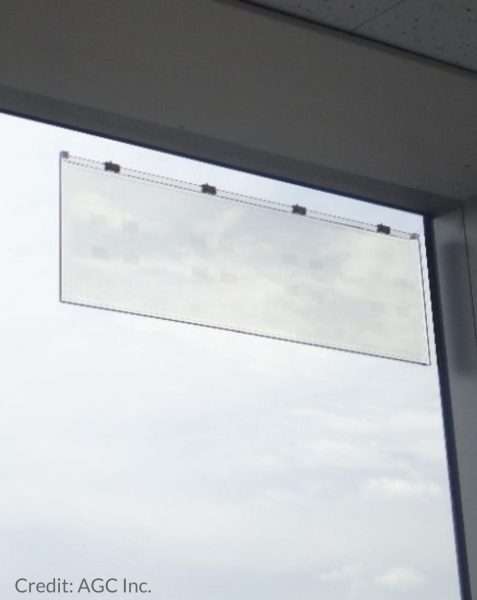
Additionally, WAVEATTOCH was tested together withWAVETHRU®, a thermal insulation window glass that has a processed surface to facilitate a more efficient radio signal penetration into and circulate within buildings.
SOLAR GLASS
“Photovoltaic glass might very wellprove to be a game changer in thegeneration of energy”
Power Generating Glass
Solar glass: A clear and renewable energy
Reforming future energy supply, the latest technology – power generating solar glass, is set to revolutionise the global glass industry.
“It’s long been a dream to have windows that generate electricity, and now that looks possible.” Professor Jacek Jasieniak from the ARC Centre of Excellencein Exciton Science.
And this future is only made possible with the introduction of innovative technologies like photovoltaic glass, a technology that converts light into electricity using transparent semiconductor-based photovoltaic cells. Using a TransparentLuminescent Solar Concentrator (TLSC), solar glass filters out ultraviolet and infrared radiation, preventing harmful radiation, in addition to generating electricity and providing thermal insulation.
Without providing much hassle to constructors, builders, designers, and architects, solar glass possesses the same qualities as conventional architectural glass. Easily replacing conventional architectural glass, solar glass can be effortlessly installed on building facades, curtain walls, and other architectural applications.
Interesting Fact:
One hour of sunlight = one year’s worth of energy to power the entire earth! That’s equivalent to burning24 billion tonnes of coal or 12 billion tonnes of oil or 10.4billion tonnes of gas!
Renewable, sustainable energy
Environmental Benefits
The introduction of solar cells drastically changes and revolutionises the way architects and users think about buildings and how it functions. Until
now, buildings have been designed based on the assumption that windows are simply just for aesthetic purposes. However, now solar cells are introducing functionality into the concept.
The introduction of solar cells drastically changes and revolutionises the way architects and users think about buildings and how it functions. Until now, buildings have been designed based on the assumption that windows are merely just for aesthetic purposes. However, now solar cells are introducing functionality into the concept.
Renewable energy is the next big leap in the glass industry. While various forms of building-integrated photovoltaics are being explored, solar glass manufacturers like Onyx are introducing other creative solutions. These solutions include photovoltaic curtain walls, pavements, overhead canopies for parking lots, skylights, and even urban furniture made from photovoltaic glass in amorphous silicon, that sustainably converts furniture into an active element that generates clean energy. Such innovations are definitely areas that the glass industry could explore further into, which further integrates glass into a functional and aesthetical way for architecture.
Financial Benefits
With over 8.3 billion square meters of flat glass installed annually in new buildings globally, it was estimated that over a terawatt of electricity could be produced at peak output. That is 9 percent of what the world’s annual electricity consumption was in 2016. Researchers have also added that two-square-metres of solar window area will generate as much electricity as a conventional rooftop solar panel.
The addition of power generating photovoltaics elements to window materials could repay the cost of installing them in less than a decade – said Thomas Brown from the University of Rome, in Italy, who used to develop solar windows. Functioning as a revenue-accelerator, users can expect a strong ROI, benefit from long-term energy savings, incentives, and tax credits. However, this technology is likely to be more applicable for multistorey buildings instead, where larger windows are deployed and more expensive to make. Therefore, the additional cost of incorporating the semiconductor-based photovoltaic cells will be marginal and could be easily covered by the energy savings in the long term.
LIQUID WINDOW
Optimising light and heat to reduce energy consumption in buildings
According to a 2009 United Nations report, buildings – many of which are heated by fossil fuels, account for 40% of global energy usage, half of which contributed by windows.Consequentially, the carbon footprint of buildings dangerously exceeds those of all transportation worldwide combined. This sparked the need to reduce carbon footprint and evolve energy efficiency technologies.

Invented by young researchers from Nanyang Technological University, Singapore (NTU), the “smart” window liquid mixture helps block sunlight and store heat. As the building cools laterin the day, the absorbed heat is slowly released, reducing the heating load, and evening out variations between the day and night temperatures. Subsequently, reducing energy costs.
Using a hydrogen-based liquid between the glass panels, the liquid window was revealed to cut about 45% of energy consumption in buildings as compared to conventional glass windows. Furthermore, it is estimated to be more cost-effective and 30% more energy-efficient than commercially available glass in the same segment.
Traditional energy-efficient windows are coated with costly layers that reduce the amount of infra-red light going in or out of a building, minimising peak hour demands for heating and cooling. However, it does not target visible light, which is a prime component of sunlight that causes the increase of heat in buildings.
To resolve this issue, the liquid window underwent numerous experiments and simulations to find the right combination which can lower energy consumption in various climates. Ultimately, the liquid window uses a mixture of micro-hydrogel, stabilizer, and water, which automatically responds to variations in temperature level sand effectively minimises energy consumption in different climate conditions.
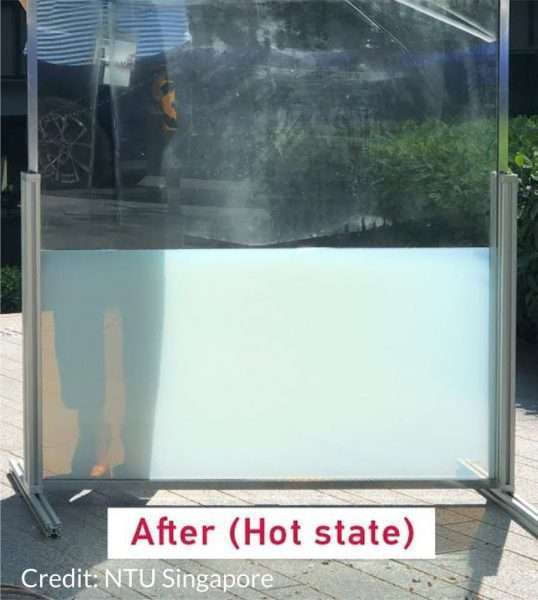
The hydrogel in the liquid mixture acts similar to a “smart window” where it turns opaque or frosted on the exterior when exposed to heat, which allows it to block sunlight and returns to its original clear state when cool.
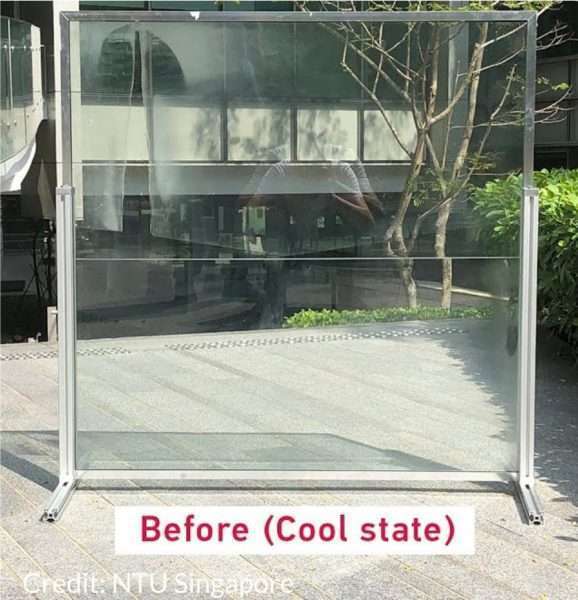
GLASSTECH ASIA
As part of the world’s prominent trade network, Glasstech Asia is the leading BAU trade fair which serves as a highly connected community/platform for the glass industry in Southeast Asia. Bringing together international experts specializing in all sectors of glass such as manufacturers, processors, and suppliers of glass machinery and accessories, Glasstech Asia provides an exclusive opportunity to meet with leading regional buyers from major markets in the ASEAN region, and network with top international connections from the BAU network. Experience strong growth in clientele base, brand exposure, networks, sales, through high profiled meetings and establish a strong foothold in one of the most dynamic and profitable regions in the world for the glass industry.
With the COVID-19 restrictions still in place, Glasstech Asia and Fenestration Asia will be hosting the second online conference which features a wide selection of key trending topics that touch on the current industry trends.
- 27 April 2021
- Expected Attendees: 200+
- 3pm – 6pm (GMT+7 Bangkok Time)
Conference Topics
- Manufacturing & Processing Innovations
- Digitalisation: The Evolution Towards A Smart Factory
- Architectural Designs: Design Trends of Post Pandemic Buildings
- Architectural Designs: Advanced Building Skins / Advanced Facade Technology

